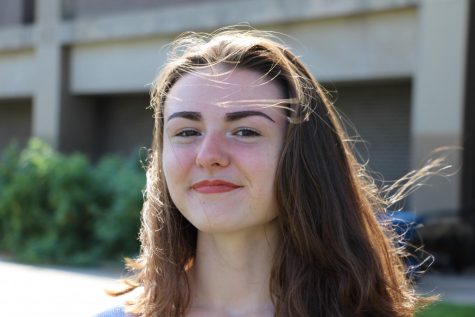South makes moves towards more diverse faculty
April 10, 2018
South typically thinks very highly of its progressive views and diverse student population. However, as diverse as the student body is, the majority of South teachers and staff identify as white. Junior Chandra Morris said, “A majority of our staff is Caucasian. We have a few Native, Hispanic, Somali and Black staff but not nearly enough to call the staff diverse.”
According to the National Center for Education Statistics, teachers of color represent 17 percent of the national workforce. In Minnesota, teachers of color represent only 4.2 percent of the national workforce. “It’s very limited in the state of Minnesota and it’s a big issue in the state of Minnesota,” said Principal Ray Aponte.
“When I was in middle school I had three black teachers which was really great, but I have friends who have never had a teacher of color and that’s really sad because… here I’ve had none essentially,” said senior Lydia Zupanc.
With such a diverse student body, representation is vital in staff. “Diversity [in staff] is necessary because we have diversity of students and I believe that all students from whatever religion or race need to see that as modeling for a positive school climate,” said David Butler, All Nations coordinator and Ojibwe language teacher. “It’s a lot easier to rebuild community when there’s representation… I’ve been to a school where I haven’t had any Native teachers and I did feel disconnected from that whole school. It was a place where I had to be and not a place where I really wanted to be.”
Morris further explained a similar situation in which she felt insecure in a white teacher’s class and felt the need to switch out. “I had to go talk to another white person about it, if I feel discriminated against based on race I should be able to go to a colored staff but that’s just not always an option.”
Although advances in diversity are small, they are noticeable here at South. “There have been changes along the way, even though I do consider the changes minor, but we are changing in a positive direction,” said Dingman Yu, the Chinese language teacher. In the 1980s, teachers of color represented 12.4 percent of the national workforce, compared to the 17.3 percent they represent now. However, that is still an incredibly low percentage that needs to be addressed at South and throughout the country as well.
Specifically at South, staff diversity has increased in recent years. Principal Ray Aponte, who has been at South since 2014 said, “I’ve increased the number of Somali speaking people by 10 since I’ve been here and I’ve increased the number of people working with our Hispanic people by six.” He continued, “Right now we have the opportunity to fill the assistant principal position here at South…and I know for a fact that people want somebody who can speak and look like them… but it’s very limited. But I have an opportunity there to bring in a person of color and I’m doing my best to do that.”
Equity and diversity program coordinator Alex Endeshaw described current efforts being made at South to increase diversity in staff. “We suggest or advise administration on how to get more teachers of color or how to bolster the roles of people of color who are already in the building… how can we turn the roles of most of the men of color who are already here as security staff and things like that into more meaningful roles or give them something to look more meaningful to the students.” He said, “What we have been trying to do is advise on why we would want to fill more roles with people of color and people from diverse backgrounds.”
Although South is making advances in a positive direction, there is always more that can be done. “I’d like to see more conscious efforts being made to recruit teachers that can better represent the diverse population of South High School,” said Yu. As Zupanc said, “There should be more teachers of color because I know that there are teachers of color out there that would be willing to teach here, that are needing jobs, and hiring them would give the school a good rep but also make the students more comfortable.”
Aponte said, “We’ve got to keep trying. The kids here, white, black, Hispanic, East African, Latino, everybody’s like, ‘Well where are all the people of color?’ and I hear it. I hear it and I pass it along but I can only do what I can. But I hear you, I hear the student body saying we want more people that look like us and I’m very sensitive to that.”





